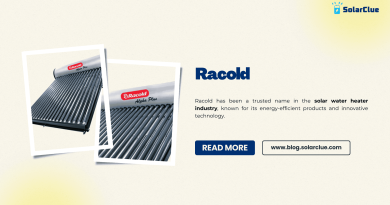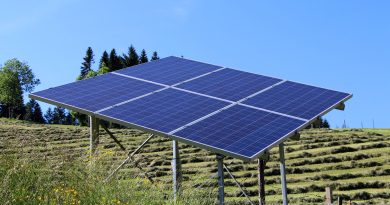Do Solar Panels Absorb Infrared?
Solar panels are known for converting sunlight into electricity, but there’s often confusion about what types of light they actually absorb. Specifically, can solar panels absorb infrared (IR) radiation, and does it play a role in their performance? This blog post dives into the science behind solar panels, the electromagnetic spectrum, and the role of infrared radiation in solar energy production.
Table of Contents
- 1 The Electromagnetic Spectrum and Solar Radiation
- 1.1 How Solar Panels Convert Sunlight into Electricity
- 1.2 The Role of Infrared Radiation in Solar Panel Performance
- 1.3 Factors Affecting Solar Panel Efficiency in Different Light Conditions
- 1.4 The Impact of Temperature on Solar Panel Output
- 1.5 Common Misconceptions About Solar Panels and Infrared Radiation
- 1.6 The Future of Solar Panel Technology and Its Ability to Harness Infrared Energy
- 1.7 The Potential of Tandem Solar Cells for Capturing Infrared Light
- 1.8 Solar Panel Absorption Across the Electromagnetic Spectrum
- 1.9 Conclusion
- 1.10 FAQs
The Electromagnetic Spectrum and Solar Radiation
The electromagnetic spectrum encompasses all types of electromagnetic radiation, ranging from gamma rays to radio waves. Sunlight, which solar panels convert into electricity, consists of a range of radiation types, primarily visible light, ultraviolet (UV) light, and infrared (IR) radiation.
| Type of Radiation | Wavelength Range | Presence in Sunlight | Absorption by Solar Panels |
|---|---|---|---|
| Ultraviolet (UV) | 10 nm – 400 nm | 10% of sunlight | Partially absorbed, contributes to energy generation but also causes degradation. |
| Visible Light | 400 nm – 700 nm | 40% of sunlight | Primarily absorbed by solar panels, responsible for most energy production. |
| Infrared (IR) | 700 nm – 1 mm | 50% of sunlight | Generally not absorbed for energy production but can cause heating effects. |
How Solar Panels Convert Sunlight into Electricity
Solar panels convert sunlight into electricity through the photovoltaic (PV) effect. When sunlight hits the photovoltaic cells, it excites electrons, causing them to flow and create an electric current. The efficiency of this process depends largely on the types of radiation the panels can absorb.
The Role of Infrared Radiation in Solar Panel Performance
Infrared radiation, which accounts for about 50% of sunlight, is generally not absorbed by traditional solar panels for electricity generation. Most standard solar panels are designed to absorb visible light, with wavelengths between 400 nm and 700 nm. However, infrared radiation does contribute to heating the solar panels, which can affect their efficiency.
Factors Affecting Solar Panel Efficiency in Different Light Conditions
Solar panel efficiency varies under different light conditions due to several factors:
- Visible Light: Solar panels are most efficient at converting visible light into electricity.
- Infrared Radiation: While not useful for generating electricity, IR radiation heats the panels, which can reduce efficiency.
- Temperature: Higher temperatures, often a result of infrared radiation, can decrease solar panel efficiency by causing increased resistance within the photovoltaic cells.
The Impact of Temperature on Solar Panel Output
Temperature plays a critical role in solar panel efficiency. As infrared radiation heats the panels, their efficiency decreases. This is because higher temperatures increase the internal resistance of the photovoltaic cells, reducing the overall power output.
| Temperature | Effect on Solar Panel Efficiency |
|---|---|
| Low Temperature | Increases efficiency by reducing resistance. |
| High Temperature | Decreases efficiency due to higher resistance and potential damage to cells. |
Common Misconceptions About Solar Panels and Infrared Radiation
There are several misconceptions about the relationship between solar panels and infrared radiation:
- Misconception: Solar panels can convert infrared radiation into electricity.
- Reality: Standard solar panels are not designed to absorb IR radiation for electricity; they primarily use visible light.
- Misconception: Infrared radiation improves solar panel performance.
- Reality: Infrared radiation increases the temperature of solar panels, which can actually decrease their efficiency.
The Future of Solar Panel Technology and Its Ability to Harness Infrared Energy
Advancements in solar technology are exploring ways to harness a broader spectrum of sunlight, including infrared radiation. Tandem solar cells, for example, layer multiple materials that can absorb different parts of the light spectrum, potentially allowing future panels to convert more of the infrared light into usable energy.
The Potential of Tandem Solar Cells for Capturing Infrared Light
Tandem solar cells are an emerging technology that could significantly increase the efficiency of solar panels by capturing a wider range of the electromagnetic spectrum, including infrared light. These cells stack different materials that each absorb different wavelengths, potentially leading to much higher efficiencies than traditional solar panels.
Solar Panel Absorption Across the Electromagnetic Spectrum
| Radiation Type | Wavelength Range | Presence in Sunlight | Absorption by Standard Solar Panels |
|---|---|---|---|
| Ultraviolet (UV) | 10 nm – 400 nm | 10% | Partially absorbed, minimal electricity generation |
| Visible Light | 400 nm – 700 nm | 40% | Major source of electricity generation |
| Infrared (IR) | 700 nm – 1 mm | 50% | Not absorbed for electricity, causes heating |
Conclusion
While standard solar panels do not absorb infrared radiation for electricity generation, understanding the role of IR radiation and its impact on panel temperature is crucial for optimizing solar energy systems. As technology advances, future solar panels may be able to harness a broader spectrum of light, including infrared, potentially leading to higher efficiencies and greater energy production.
Here at SolarClue®, we offer a smart, practical, and “beautiful” solution. You will be answered for all the questions related to Solar.
We provide all kinds of brands that are the Best Solar panels in India.
If you are the one who is planning for the solar power system. Don’t hesitate to contact our team!
Looking forward to empowering you with solar energy, just like hundreds of our other clients!
FAQs
1. Can solar panels absorb infrared radiation?
Standard solar panels primarily absorb visible light for electricity generation. Infrared radiation is not typically absorbed and used for generating electricity but does cause the panels to heat up.
2. Does infrared radiation affect the efficiency of solar panels?
Yes, infrared radiation increases the temperature of solar panels, which can decrease their efficiency due to higher internal resistance.
3. What is the primary type of light absorbed by solar panels?
Solar panels primarily absorb visible light, which falls between 400 nm and 700 nm in the electromagnetic spectrum.
4. Are there solar panels that can use infrared radiation to generate electricity?
Emerging technologies like tandem solar cells are being developed to capture a broader range of the spectrum, including infrared light, potentially increasing efficiency.
5. How does temperature impact solar panel performance?
Higher temperatures, often caused by infrared radiation, can reduce the efficiency of solar panels by increasing the resistance within the cells.



